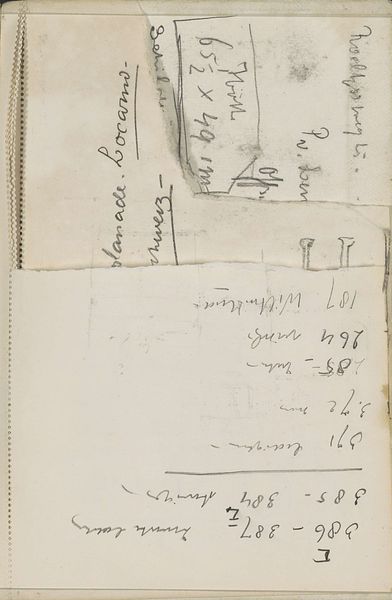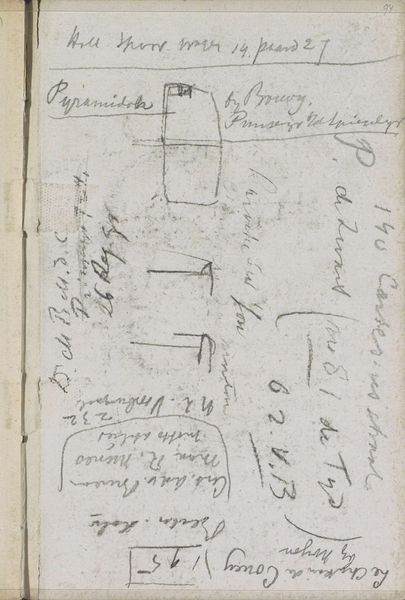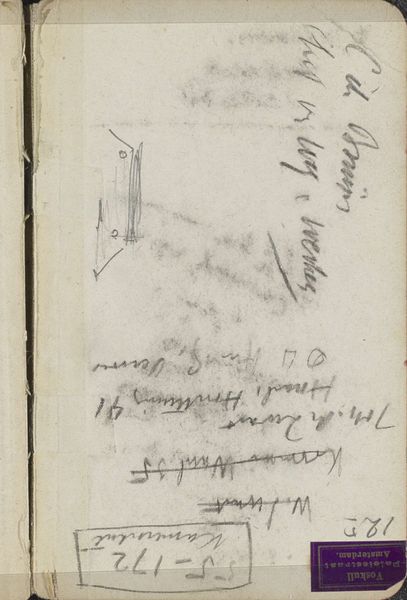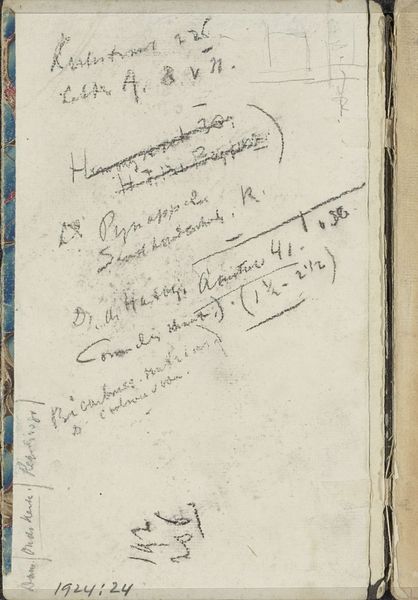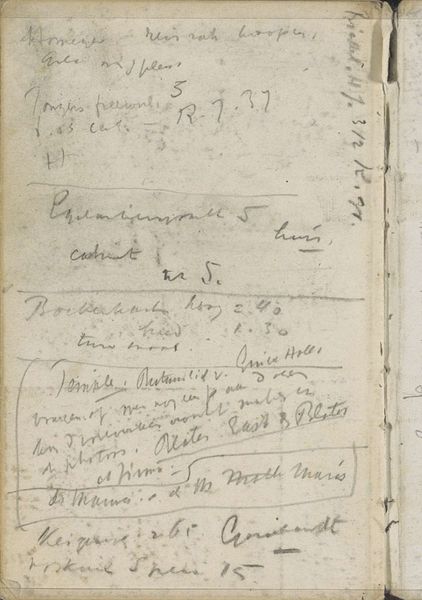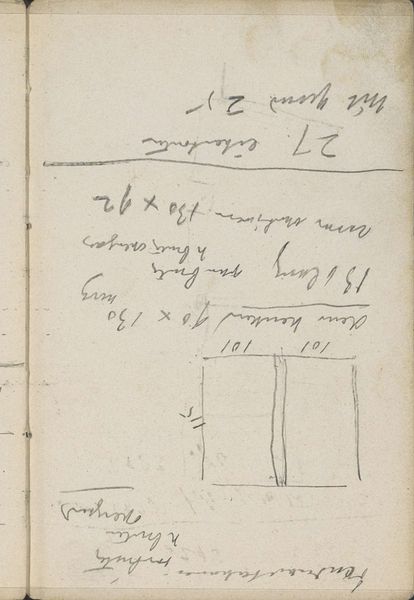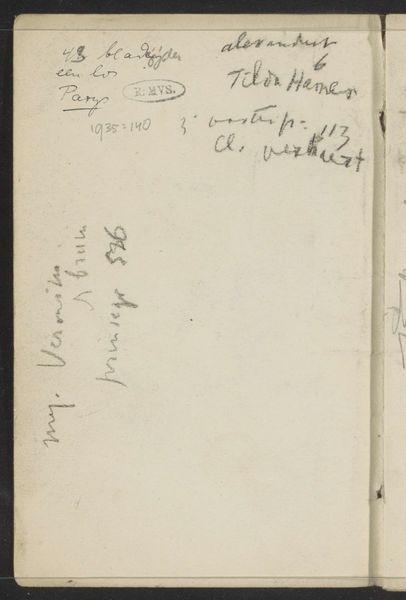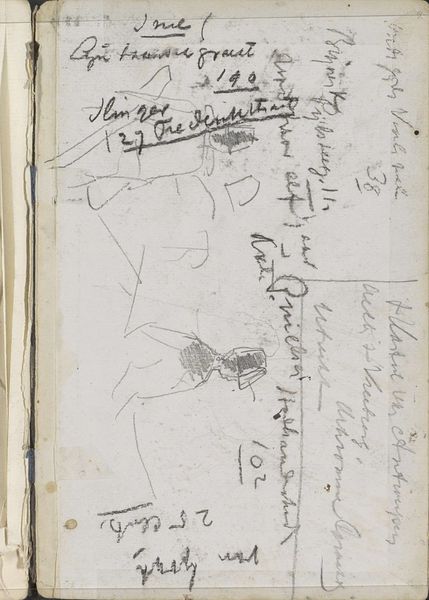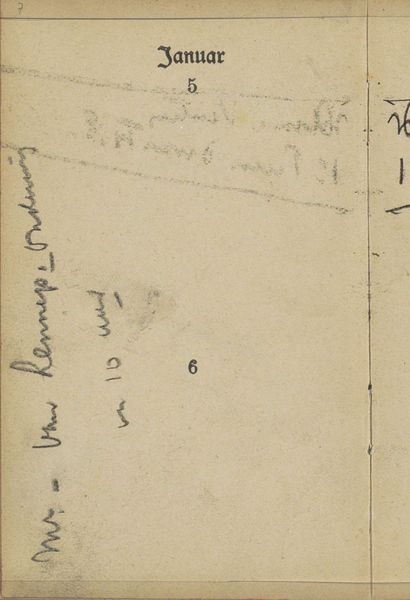
drawing, paper, ink, pencil, architecture
#
drawing
#
impressionism
#
paper
#
ink
#
geometric
#
sketch
#
pencil
#
geometric-abstraction
#
cityscape
#
architecture
Copyright: Rijks Museum: Open Domain
Editor: This is George Hendrik Breitner's "Architectuurstudies" from around the 1880s, housed here at the Rijksmuseum. It's a drawing in ink and pencil on paper – almost like a page ripped straight from an artist's sketchbook. What captures my attention most is the raw, fragmented quality; it's as though we are peering into Breitner's mind. How do you approach a piece like this? Curator: Precisely, that rawness is key. Let's consider the formal properties first. Observe the line work: gestural, immediate. There's a clear emphasis on capturing form with minimal, decisive strokes. The composition isn't about photographic realism but about conveying an impression, a spatial arrangement. Consider the use of layering: words atop architectural sketches, hinting at a simultaneity of observation and thought. How does that interplay between text and image affect your reading of the drawing? Editor: It almost feels like I am reading his mind. Curator: Indeed. The medium itself becomes crucial. The deliberate use of pencil and ink allows for varying degrees of definition, highlighting specific architectural details while leaving others intentionally vague. Notice the geometry, the abstract shapes derived from architectural forms. Breitner is less interested in the building itself and more in the abstract play of forms. Where does the geometric shapes lead our mind? Editor: Towards basic and simple forms stripped bare of extra, ornamental decorations. Curator: The focus shifts away from representational accuracy to the pure visual language of line, form, and spatial relationships. What do we make of it, considered within the broader context of impressionism, moving towards abstraction? Editor: I see now. Breitner is using architecture as a jumping-off point for an exploration of pure form and the essence of seeing, reducing the elements to create his personal visual world. Curator: Precisely.
Comments
No comments
Be the first to comment and join the conversation on the ultimate creative platform.
